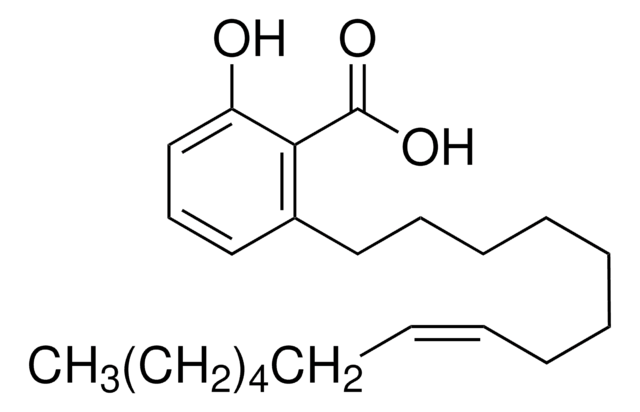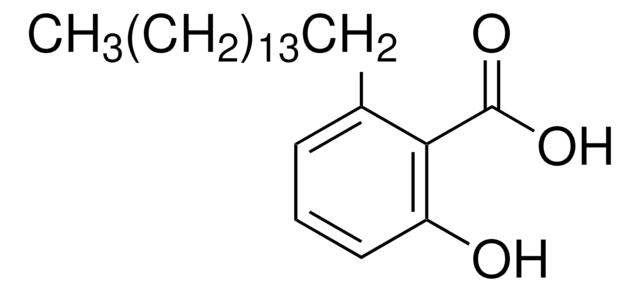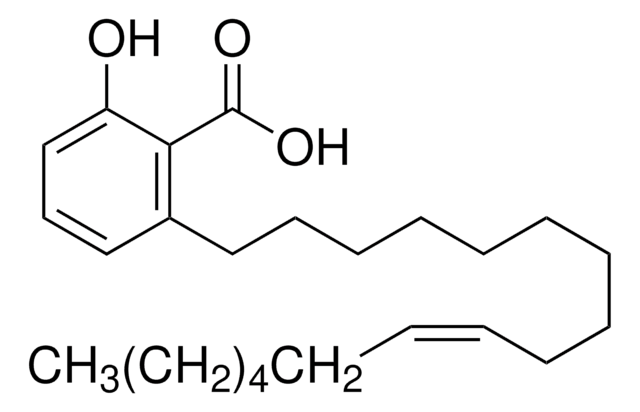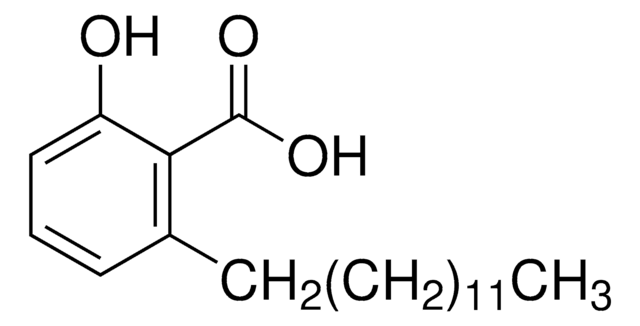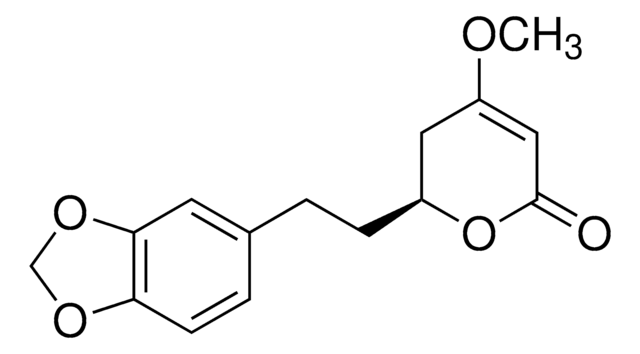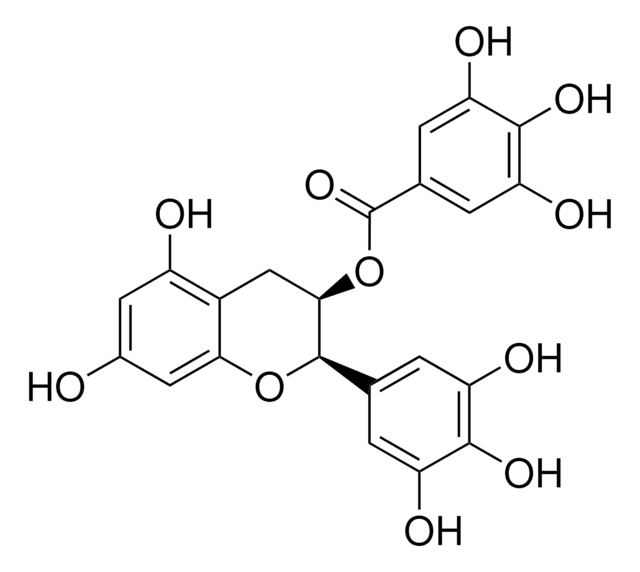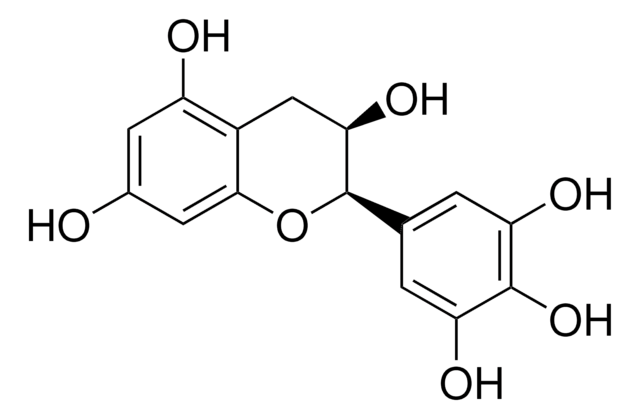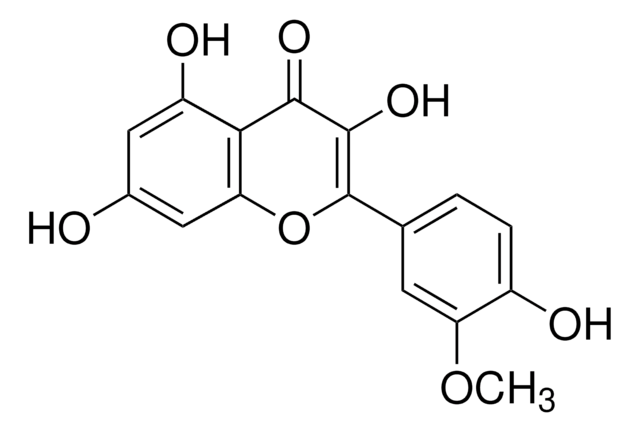02580585
Ginkgolic acid C15:1
primary reference standard
Sinonimo/i:
6-[(8Z)-Pentadecenyl]-salicylic acid, Ginkgolic acid I
About This Item
Prodotti consigliati
Grado
primary reference standard
Produttore/marchio commerciale
HWI
applicazioni
food and beverages
Stringa SMILE
CCCCCC\C=C/CCCCCCCc1cccc(O)c1C(O)=O
InChI
1S/C22H34O3/c1-2-3-4-5-6-7-8-9-10-11-12-13-14-16-19-17-15-18-20(23)21(19)22(24)25/h7-8,15,17-18,23H,2-6,9-14,16H2,1H3,(H,24,25)/b8-7-
YXHVCZZLWZYHSA-FPLPWBNLSA-N
Cerchi prodotti simili? Visita Guida al confronto tra prodotti
Altre note
Avvertenze
Warning
Indicazioni di pericolo
Consigli di prudenza
Classi di pericolo
Aquatic Chronic 4 - Skin Sens. 1
Codice della classe di stoccaggio
11 - Combustible Solids
Classe di pericolosità dell'acqua (WGK)
WGK 3
Punto d’infiammabilità (°F)
509.9 °F - (calculated)
Punto d’infiammabilità (°C)
265.5 °C - (calculated)
Scegli una delle versioni più recenti:
Certificati d'analisi (COA)
Non trovi la versione di tuo interesse?
Se hai bisogno di una versione specifica, puoi cercare il certificato tramite il numero di lotto.
Possiedi già questo prodotto?
I documenti relativi ai prodotti acquistati recentemente sono disponibili nell’Archivio dei documenti.
I clienti hanno visto anche
Il team dei nostri ricercatori vanta grande esperienza in tutte le aree della ricerca quali Life Science, scienza dei materiali, sintesi chimica, cromatografia, discipline analitiche, ecc..
Contatta l'Assistenza Tecnica.